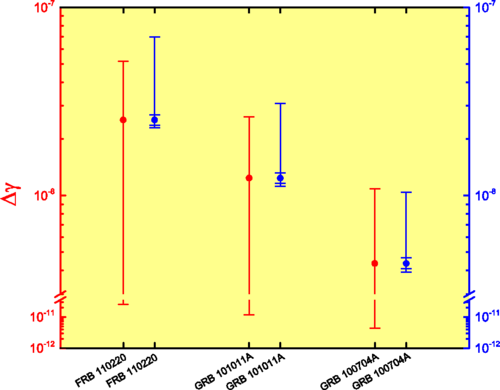New, Rare Radio Signals From Space Prove Best Test Of Einstein's General Relativity Theory

New, mysterious radio signals from space have proved a better method for testing Albert Einstein's famed theory of general relativity, according to a new study. Researchers say the rare signals, called fast radio bursts, are ten to 100 times more credible than other gamma-ray burst testing methods.
The paper published last week in the journal Physical Review Letters comes 100 years after Einstein developed the equivalence principle, a component of his theory of general relativity, which says that gravitational and inertial forces are similar and often indistinguishable. The principle also states that the geometry of spacetime is shaped by the mass density of galaxies, stars and other galactic objects.
Fast radio bursts, which only last milliseconds, were only recently detected on Earth. Researchers say the 12 radio bursts discovered were likely caused by "mysterious events" beyond the Milky Way galaxy. The study found that these bursts move through space as photon particles.
"If Einstein's equivalence principle is correct, any time delay that might occur between these two photons should not be due to the gravitational fields they experienced during their travels but should be due only to other physical effects," said Peter Mészáros , professor of physics at Penn State and the senior author of the research paper. "By measuring how closely in time the two different-frequency photons arrive, we can test how closely they obey Einstein's equivalence principle."

Researchers say that they expect to be able to draw greater conclusions from the radio signals as more are detected on Earth. "With abundant observational information in the future, we can gain a better understanding of the physical nature of fast radio bursts," Mészáros said. "When more-powerful detectors provide us with more observations, we also will be able to use fast radio bursts as a probe of their host galaxies, of the space between galaxies, of the cosmic-web structure of the universe and as a test of fundamental physics."
The study of the fast radio bursts proves to be better than tests on gamma rays and other energies from a 1987 supernova explosion, supernova 1987A. The fast radio burts study "supersedes by one to two orders of magnitude the previous best limits on the accuracy of the Einstein equivalence principle," Mészáros said.
© Copyright IBTimes 2024. All rights reserved.






















